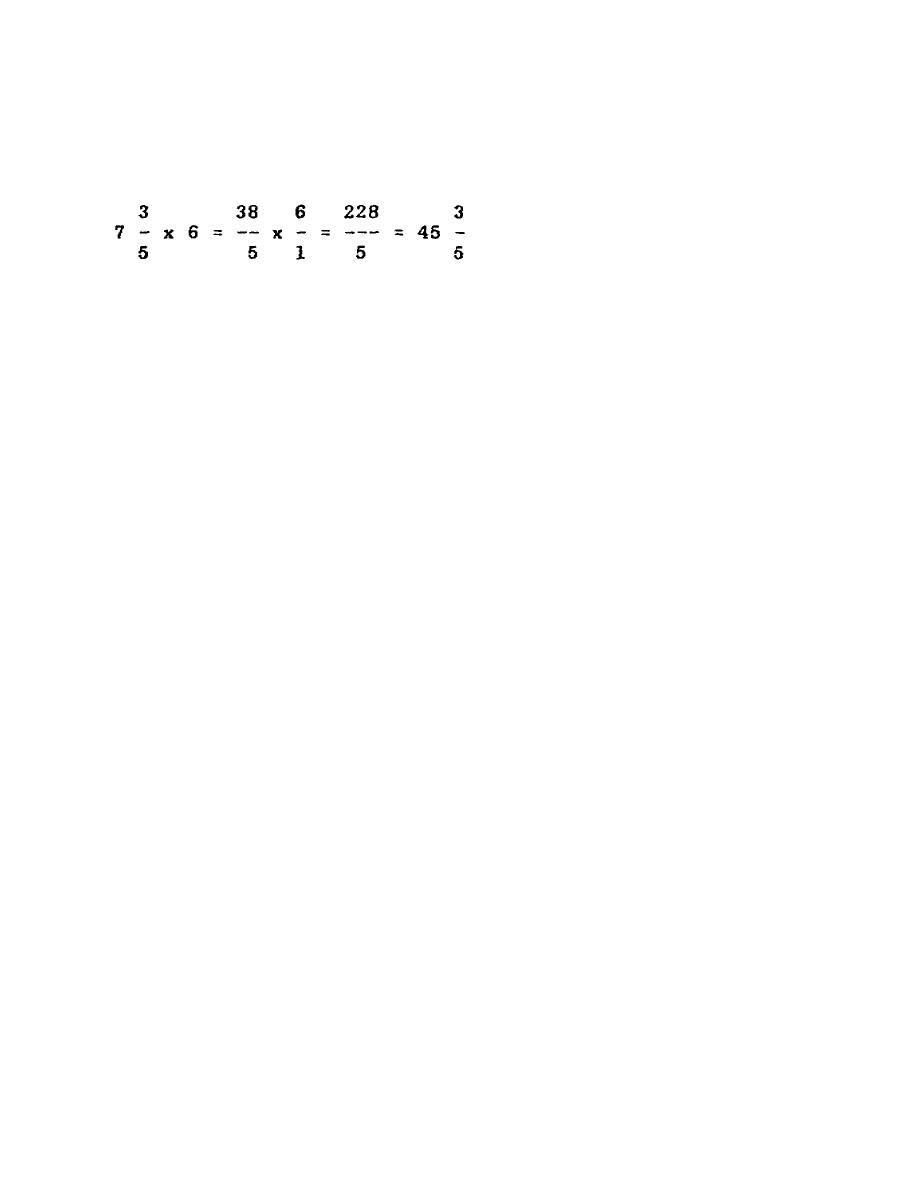
MACHINE SHOP CALCULATION - OD1640 - LESSON 1/TASK 1
Multiply 7 3/5 x 6.
9.
Division
a.
General. Division of fractions is the reverse of multiplication. For
instance, dividing the numerator of a fraction reduces the number of
fractional units, but the size of each unit remains the same. Multiplying
the denominator reduces the size of the fractional units, but the number of
fractional units remain the same. This is the same as inverting the divisor
and multiplying. Thus, 7/8 ƒ 3/4 and 7/8 x 4/3 give the same answer. The
fraction turned upside down is called the reciprocal.
b.
Dividing a Fraction by a Whole Number.
Rule 1. Change the whole number to a fraction which has the number 1 as a
denominator. Invert this fractional form. Then multiply.
EXAMPLE
Divide 7/11 by 3. Since 3 = 3/1, the reciprocal of 3 is then 1/3.
7/11 ƒ 3
= 7/11 x 1/3 = 7/33.
c.
Dividing a Whole Number by a Fraction.
Rule 1.
Invert the fraction and multiply.
EXAMPLE
Divide 13 by 3/7.
Invert 3/7 to 7/3, then multiply.
13 ƒ 3/7 = 13 X 7/3 =
91/3 = 30 1/3.
d.
Dividing a Fraction by a Fraction.
Rule 1.
Invert the divisor, that is the second fraction, and multiply.
19



 Previous Page
Previous Page
